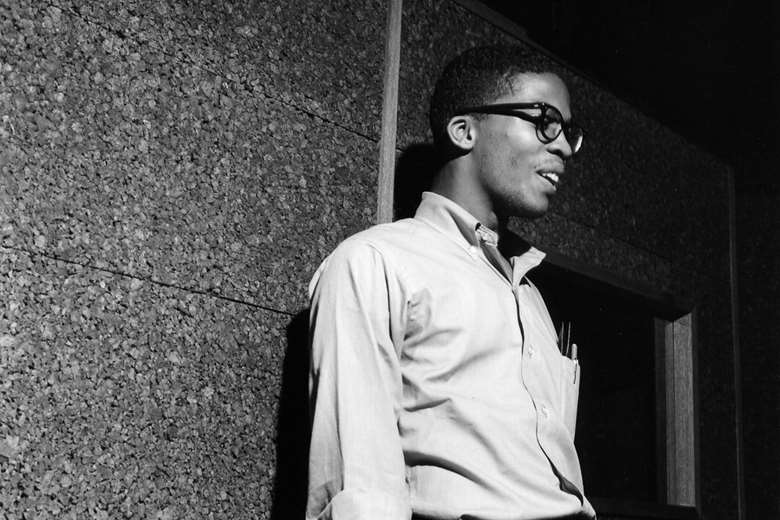Across the Tracks: Herbie Hancock’s 'Maiden Voyage'
Brian Priestley
Thursday, July 11, 2024
Brian Priestley sets sail into the heart of 'Maiden Voyage', one of Herbie Hancock’s most enigmatic tunes

Among the many musicians who first made their name during the glory days of Blue Note, Herbie Hancock was born just one year after the label itself, and is possibly the last person of that vintage still active on the world stage. With a career so varied it almost defies summarising, he has achieved widespread success without sacrificing his allegiance to and absorption in jazz. And his years with Blue Note were, of course, the foundation of that career.
Hancock first appeared on the label as a sideman for his eight-years-older mentor Donald Byrd (on 1961’s Royal Flush and a couple more not released until much later), and Byrd it was who advised him to hold out for playing all original compositions on his debut album, the following year’s Takin’ Off. It was apparently Byrd too who encouraged Herbie, when deputising for Chick Corea, to play the album’s lead-track ‘Watermelon Man’ on a gig with Latin bandleader Mongo Santamaria, who went on to record it (not on Blue Note) and make it a Top 10 single.
It’s perhaps revealing that the title-track was subsequently used in a television ad for perfume
There are of course several even-8th-note, funk- or Latin-influenced tracks throughout Hancock’s history, and a lesser artist might have happily identified with them to the exclusion of other approaches. Even his third Blue Note album, the adventurous and less commercially successful Inventions And Dimensions, has Willie Bobo (still a Santamaria sideman at this period) playing the drumkit. But, along with considerable variety, there’s also a distinct progression among the early hits, with ‘Watermelon Man’ for instance being a funky blues in F-major, stretched to 16 bars by the triple repetition of bars 9-10 which ends with a stimulating one-bar break.
Takin' Off's immediate follow-up, the album My Point Of View, includes a one-chord blues ‘Blind Man, Blind Man’ (an 8-bar theme with occasional two-bar tag, in B-flat), while the quartet album Empyrean Isles – which also sees the first appearance on Blue Note of the entire groundbreaking Miles Davis rhythm-section – has a more suspenseful 16-bar blues adaptation (‘Cantaloupe Island’ in F-minor) with a 'modal' feel created by moving first to D-flat and then D-minor for four bars each before returning to the home key. The title-track of Hancock’s next album Maiden Voyage (1965) is an interesting development of some elements in ‘Cantaloupe Island’, and not merely because it has a 32-bar AABA theme rather than 16 bars.
The intro outlines the two changes of the A-section but, by starting in D and then moving to F for 4 bars each, it already seems more spacious. And, rather than the minor chords of ‘Cantaloupe Island’, the D and the F roots support what are heard as 11ths (or sus4), in other words neither minor or major but implying the Mixolydian mode. The first actual A-section begins as the horns enter (at 0:16) with a dreamy melody featuring two long-held notes, each within a sparse eight-note phrase. Hancock’s chord voicings remain exactly the same as in the intro until the arrival of the B-section (0:48), which – rather like ‘So What’ or ‘Impressions’ – moves the root up from D to E-flat. But also, rather than doubling the bass-figure as before, Hancock now plays chords much higher up the keyboard, and the tenor (previously in octave unison with the trumpet) suddenly has a harmony note, much higher and held throughout the whole eight-bar B-section, before returning to the opening pitches.
It may seem strange to discuss orchestration within a mere quintet, but this is clearly a deliberate textural effect and an indication of the composer’s sensitivity. And how interesting that, despite having recorded with Wayne Shorter and played with him numerous times in the Davis band during the previous six months, Hancock chose for this album to use one of Shorter’s predecessors in the band, George Coleman. Starting at 1:20, Coleman is the first to solo on the sequence of just eight chords held for four bars each and, remaining within their spacey ambience, he is multi-noted but reflective, while Hancock’s backing is more varied than hitherto.
Beginning two choruses at 2:21 Freddie Hubbard travels much further, from a restrained opening (quoting the song ‘Moonglow’ at 2.51) to his amazingly fluent scale-running which, with Hancock’s backing, suggests some turbulent waters on the voyage. The pianist’s own two choruses (from 4:22) are even more varied, with some modernist voicings (4:30) plus more typical post-bop phrasing (e.g. at 5:01) and some water-evoking runs of his own (5:59). And then, with Ron Carter and Tony Williams keeping everything on an even keel, the theme returns (6:23) followed by a lengthy fade backed by the introduction, with Hubbard returning for some quiet wavelets.
Herbie has been quoted as saying, “The album Maiden Voyage was a hit, but only in the jazz circle.” However, it’s perhaps revealing that the title-track was subsequently used in a television ad for perfume. A first – and by no means the last – instance for Hancock, but was this also a first for Blue Note?
This article originally appeared in the August 2024 issue of Jazzwise. Never miss an issue – subscribe to Jazzwise today





